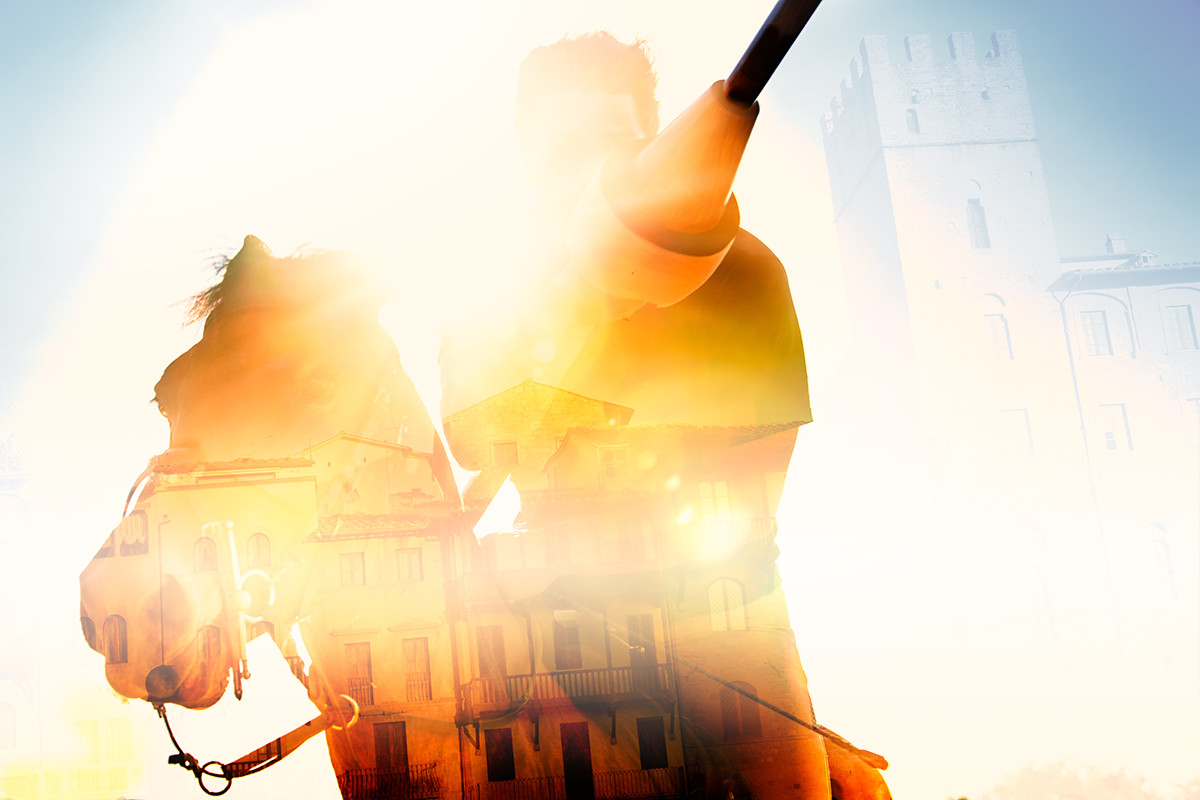The medieval knight is a figure that has always fascinated lovers of history and art.
After all, medieval knights and the ideals of chivalry have particularly inspired medieval literature. This is the case in literary cycles, such as the Carolingian Cycle, in which Charlemagne’s legendary companions are celebrated, and the Brittany cycle, known to all as the legend of King Arthur and the Round Table.
But let’s see why the medieval knight has so fascinated Ellius, to the point of inspiring an entire collection, for men and women.
Medieval knights
Who were the medieval knights?
We often hear about them and their exploits, but let us try to delve into the evolution of this figure during the Middle Ages.
The knight, in the High Middle Ages, was considered to be of low nobility. It was only in the so-called Late Middle Ages, which ran roughly from 1300 to 1550, that he became associated with the ideals of chivalry, as they were passed down through the ages.
Medieval knights were vassals in the service of lords, to whom they lent their trust and loyalty and from whom, in return, they received primary goods, such as food and lodging, but also armour and horses, up to portions of land (the fiefs).
The knights’ greatest skill was warfare on horseback and the investiture rite was certainly one of the most important moments in a knight’s life.
The investiture ceremony was celebrated during an important event, such as a wedding of a nobleman or king, or during festivities such as Christmas or Easter.
It was during the investiture ceremony that the medieval knight took his oath, which was consecrated by the touch of the sword, by the master of the ceremony, on the new knight’s shoulders.
Code of Chivalry
If in the beginning the code of chivalry meant above all loyalty to one’s lord and, therefore, military professionalism, during the Middle Ages values changed considerably.
In fact, the code of chivalry was gradually transformed into a true social code imbued with values such as kindness and nobility.
It was then the deeds and above all the tales of that period that definitively imprinted the meaning we now know as the ‘code of chivalry’.
In fact, there are many works that narrate of the knight of the Middle Ages and the code of chivalry, portraying this figure as a champion of high values, such as friendship and loyalty.
Since then, in the collective imagination, the figure of the knight has changed from that of the mere warrior on horseback to that of the gentle and courteous man, at the service of the weakest.
With time, medieval knights also became associated with the concept of courtly love, as this figure dedicated his life to the love of a single woman, to whom he was loyal and to whom he dedicated his great deeds.
Thus, in addition to loyalty to one’s lord, moral integrity and physical valour, medieval knights are attributed higher virtues such as courage, loyalty, defence of the weak and respect for women.
It is precisely these ideals that inspire and make Ellius fall in love with this immortal figure from our history.
The tournaments and jousts
In times of peace in the Middle Ages, it was customary to organise tournaments or ‘jousts’, in which knights challenged each other.
The medieval knight on horseback used to parade around the court before the tournament began, wearing his war armour and the banner of the fief he represented.
Tournaments were usually martial sports, in which they simulated real combat and in which many were injured at the end of the tournament.
The joust, on the other hand, was different, more akin to a popular contest, in which two knights, armed with blunt wooden lances, had to strike until they unseated the other.
The winner had the right to take the horse and armour of the losing knight. At the end of the joust, singing and dancing cheered the event.
The knight collection
The Ellius knight collection takes values and symbols from the medieval period and brings them back in jewellery with a unique character, carefully crafted by skilled goldsmiths in 925 silver.

The crusader helmet, for example, is an element rich in symbolism, because it was part of heavy metal armour and was worn by knights to defend themselves against attacks during battles.
Earrings, necklaces and bracelets by Ellius redesign it and enrich it with white, black or coloured stones, making it an original piece of jewellery.
This is the case with the asymmetrical knight earrings, in which the shield, helmet and lance are combined to create a modern piece of jewellery, but one charged with timeless values.
Another element in the collection is the jousting lance.
This lance recalls the one used by medieval knights to fight each other during jousts.
The jewellery from the knight’s collection acquires a modern and elegant character, thanks to the stones that adorn it. The jousting earrings, available in different versions, are the perfect gift for a dynamic and strong woman.
The knight’s parade, on the other hand, is given as a gift through the rigid rings and bracelets that feature embossed designs of the knight on horseback.
The knight’s parade ring is available in men’s and women’s versions.
The knight’s collection has recently been further enriched with rosary necklaces:

Fashionable, yet full of character, they bear the symbols of the knight in different versions.
Have fun admiring the wide range of Ellius jewellery and choose the one that suits you best!

